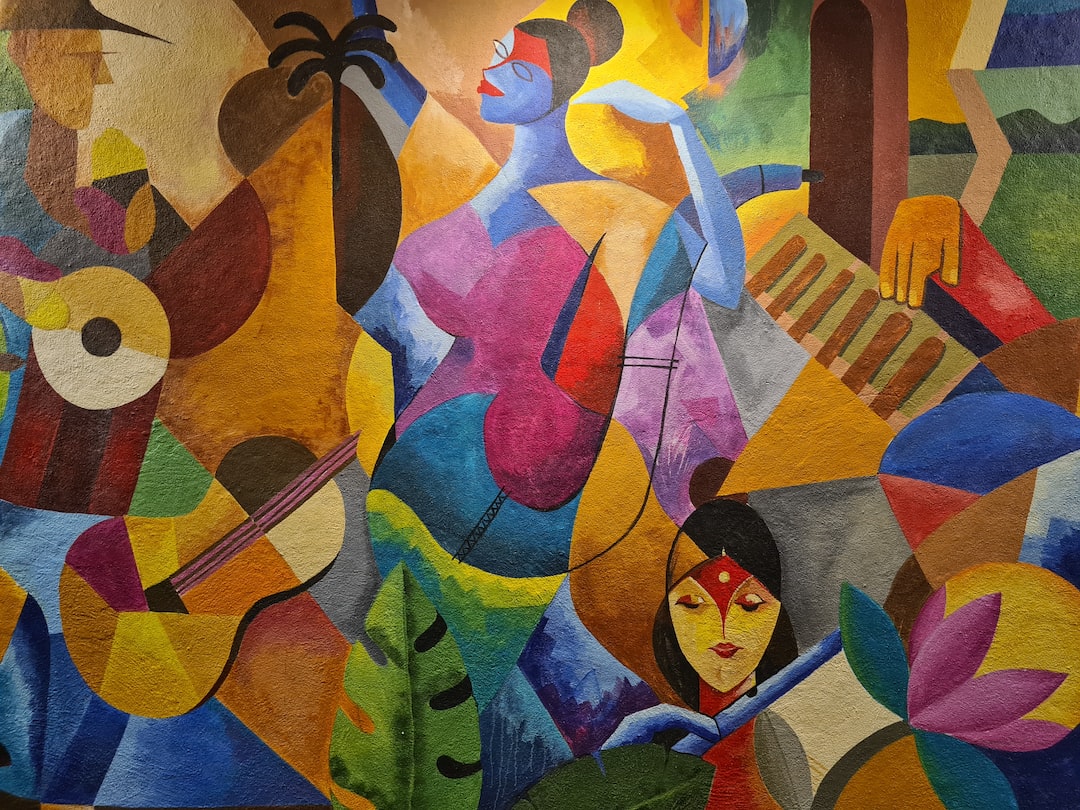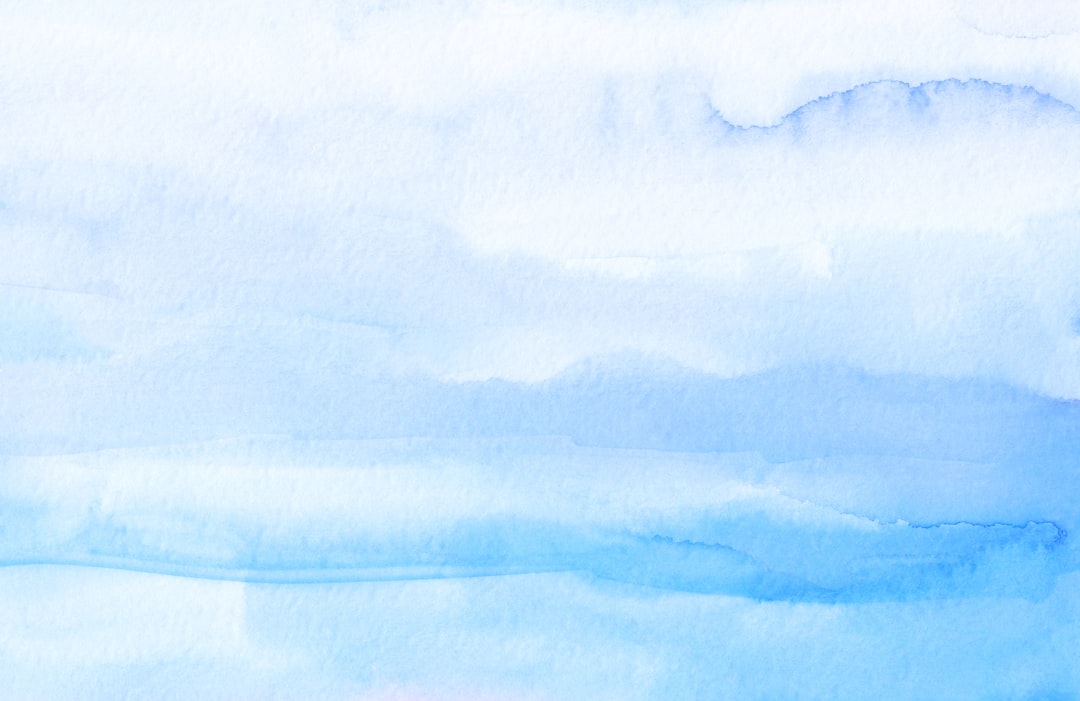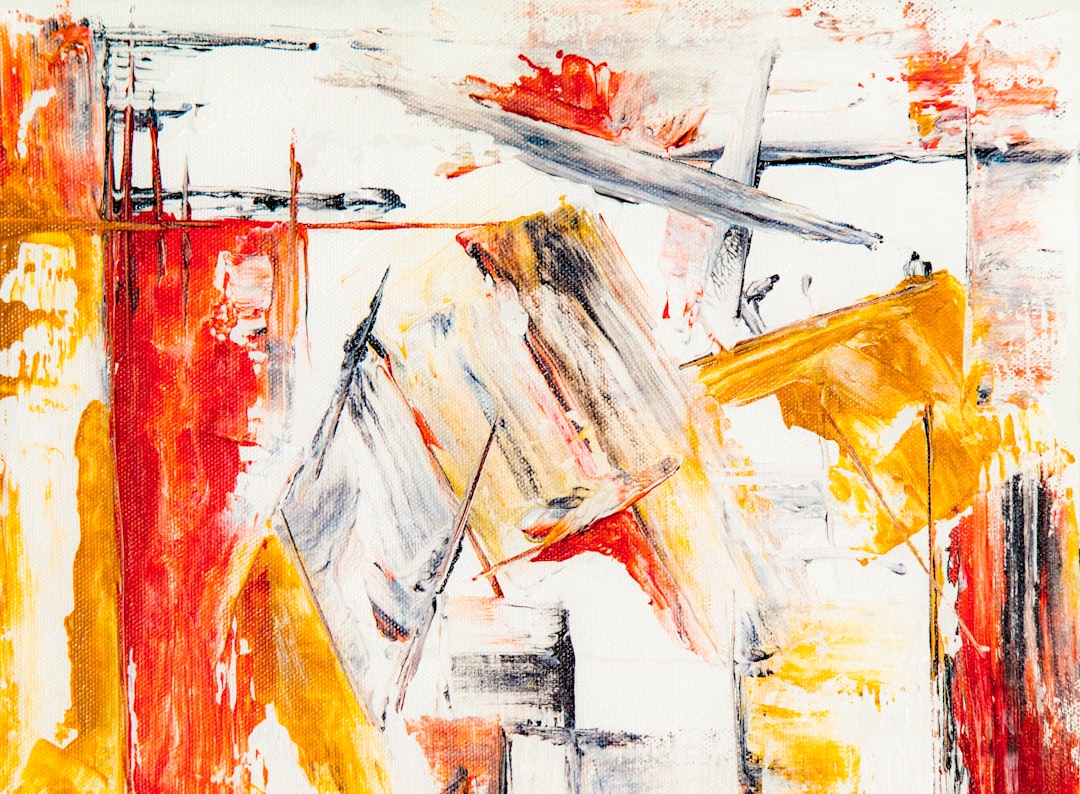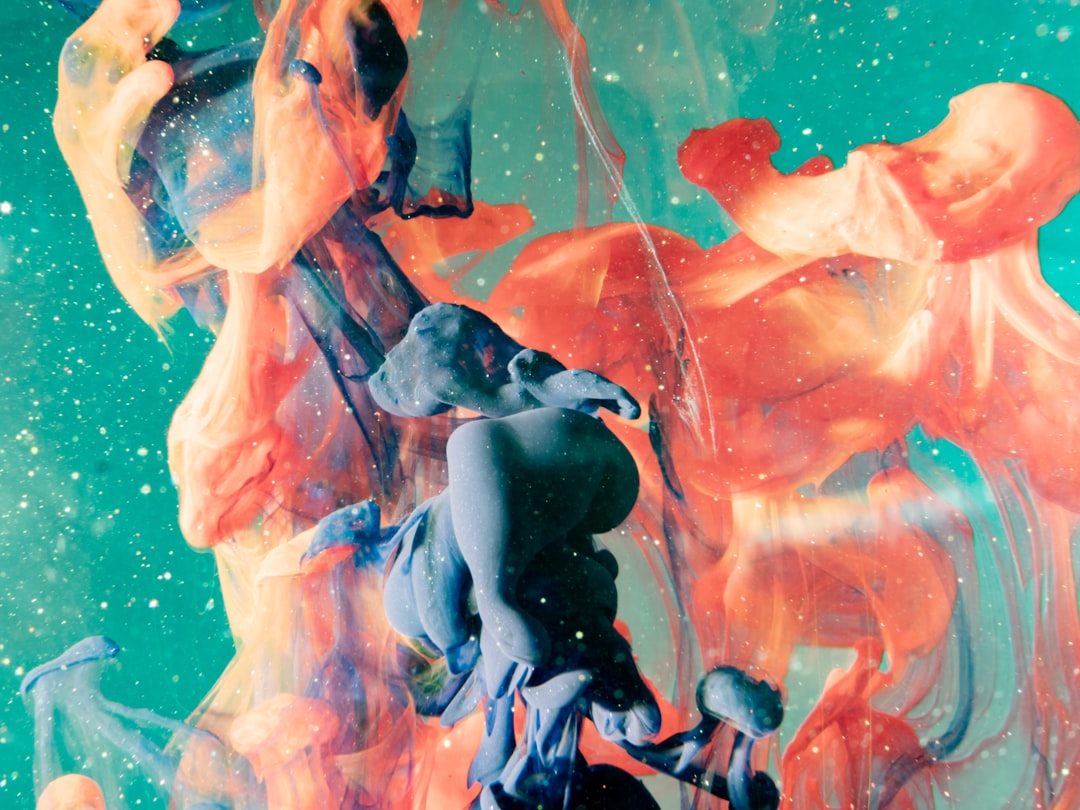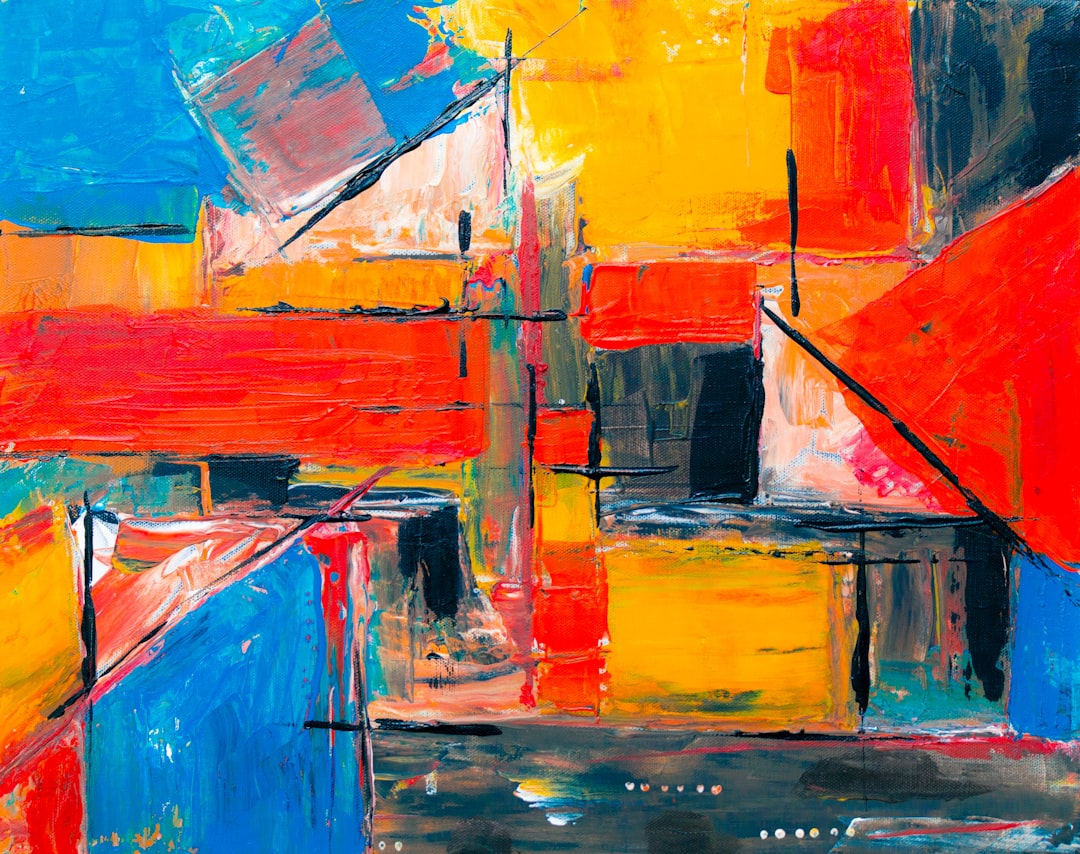Artificial intelligence (AI) has taken over many industries, including medicine, finance, and manufacturing. But it’s now making inroads in the art world, as well. Today, AI-driven art is becoming increasingly popular and has taken the creative scene by storm. AI-driven art refers to art pieces that are either created by AI software programs or significantly influenced by them. It’s a new frontier for the art world that’s challenging the traditional notions of creativity, imagination, and art forms.
One of the biggest advantages of AI-driven art is that it has the potential to create unique and innovative art forms that were previously unattainable. With AI, artists can experiment with various techniques and approaches that they would have never thought of otherwise. It’s also an excellent way to push the boundaries of traditional art by incorporating cutting-edge technologies and futuristic concepts. Furthermore, AI-driven art has the potential to provide more access to art for a wider range of people, regardless of their socio-economic background.
However, this emerging art form has also raised many ethical questions, like the role of technology in the creative process, the ownership and authorship of the artwork, and the potential consequences of replacing human artists with machines. The integration of AI technology in the art world has sparked a debate within the community about what constitutes original art, and what role human intention and creativity should have in the art-making process.
In this blog post, we’ll explore the numerous aspects of AI in the art world, including the various AI-driven art forms, the role of AI in art criticism and creation, the future of AI-generated or collaborative art, the ethical implications of AI art, and some of the most groundbreaking AI art installations and projects. This post is a comprehensive guide to understanding the rise of AI in the art world and how it’s changing the art scene as we know it.
Brush, Palette and Code: AI-driven Art Forms
Artificial Intelligence (AI) has revolutionized every aspect of our lives, and the art world is no exception. AI-driven art forms have disrupted the traditional art world, ushering in an era of unprecedented creativity, innovation, and experimentation. Today, AI is being used to create stunning and surreal visual art that evokes emotions, inspires imaginations, and pushes the boundaries of what we thought was artistically possible.
One of the most exciting aspects of AI art is the synthesis of technology and traditional art forms. With AI, artists can now fuse traditional artistic concepts, such as color and brushwork, with technological innovations. For example, AI can be used to create beautiful, abstract digital paintings that were previously impossible to produce with traditional paintbrushes and canvases.
Another exciting aspect of AI art is the creative collaboration between artists and machines. With AI, artists can now work collaboratively with machines, developing new forms of art that reflect the intersection of technology and human creativity. From AI-generated music to AI-assisted visual art, these collaborations are producing some truly awe-inspiring works of art.
However, AI art has not been without controversy. Some critics argue that AI-generated art lacks the emotional depth and expression of human-created art. Others argue that AI art may contribute to the automation of creative jobs, leading to unemployment in the arts sector.
Despite these concerns, the rise of AI-driven art forms presents a tremendous opportunity for the art world. AI is pushing artists to explore new and innovative avenues for creative expression, leading to the emergence of entirely new art forms. The future of AI art is bright, and it is exciting to imagine the possibilities that this fusion of technology and human creativity will bring.
Today, AI is being used to create stunning and surreal visual art that evokes emotions, inspires imaginations, and pushes the boundaries of what we thought was artistically possible.
Aesthetic Discrimination? Evolving AI Art Critique
As Artificial Intelligence has been getting more refined, it is no longer limited to performing mundane, repetitive tasks. It’s becoming increasingly integrated into the dynamic, creative world of art as well. Even though AI-generated art is not a new phenomenon, recent developments in machine learning technology have vastly improved the quality and versatility of AI-generated artworks. As a result, it is challenging to distinguish between human-made art pieces and those produced by machines.
The technology behind AI-generated art has come a long way, and so has the ability of AI systems to evaluate the aesthetic value of an artwork. With algorithms embedded in AI models, it is now possible for machines to create and evaluate artistic works on their own. These systems, in most cases, can identify elements such as composition, color, and style, and then provide feedback based on these parameters. This remarkable advancement of AI technology leads to an obvious question: Can AI be a legitimate art critic?
One of the biggest challenges to AI art critique is that there is no one universally accepted definition of art – any definition is heavily influenced by the culture, personal experience, and education of the individual making the judgement. Therefore, how can an AI judge something that is considered subjective and varies significantly for every person?
One approach to overcome this challenge is to train machines to learn from past critiques and evaluations made by art experts. By analyzing millions of critiques, AI becomes capable of distinguishing between good and bad art based on learned patterns. While this approach can be useful in sorting and classifying artworks within a specific domain, it faces limitations in assessing the ingenuity, vision, and creativity of an artist.
Another challenge is that the traditional notion of art critique involves understanding the artist’s intention behind the work. However, this is something that is much harder for a machine to do. Machines lack human experiences, emotions, and background knowledge, which are crucial when interpreting the intention and the message behind a piece of artwork.
Despite these difficulties, AI art critique provides an excellent opportunity to broaden the scope of artistic review and make evaluations more objective, transparent, and less influenced by personal bias. In a way, using AI in art critique could eliminate the professional gatekeeping that is often present within the industry, making it easier for lesser-known artists and outsider genres to get the recognition they deserve.
In conclusion, AI technology presents a significant opportunity to revolutionize the art world. While AI-generated art and AI-based art critiques are in their infancy, they are continuously evolving and growing, providing new and exciting ways for artists to advance the medium of art. At the same time, this raises new ethical considerations that need to be addressed. As we enter a new era of creativity and innovation, it is important to embrace these new developments while also acknowledging the role of humans in shaping the art world.
By analyzing millions of critiques, AI becomes capable of distinguishing between good and bad art based on learned patterns.
A portrait of the future: AI-generated or Collaborative Art
The future of art is a topic of much debate and speculation, with many experts predicting that artificial intelligence (AI) will play a central role in the creation and distribution of art. The question on many people’s minds is: will AI-generated art replace the work of human artists, or will the two collaborate to create even more innovative and breathtaking pieces? It’s a complex question, and there are many factors to consider.
On one hand, AI-generated art has already made significant inroads in the art world. Machines can now learn to paint portraits, compose music, and even create sculptures! AI-driven art may be faster, more efficient, and cheaper than traditional art, which could give it an edge in terms of popularity and accessibility. AI-generated art can also push the limits of what is possible in terms of creativity, exploring new techniques and styles that artists may not have been able to think of on their own.
However, there are also many who caution against the rise of AI-generated art. They argue that art is a uniquely human experience, and that it is something that should be preserved and celebrated in its traditional forms. Furthermore, AI-generated art may lack the same emotional depth and context that human-created art has. And while AI may be able to replicate artistic styles and techniques, it cannot replicate the thought process or inspiration behind a piece.
So, what does the future hold for art? It’s likely that we will see a mix of both AI-generated and human-created art. It’s possible that AI-driven art will be more prevalent in the mainstream, while traditional artistic techniques will continue to be valued in more niche markets. It’s also possible that we will see a crossover between the two, with artists collaborating with AI systems to create new, unique, and unexpected forms of art.
Regardless of how the future of art unfolds, there’s no doubt that AI will have a significant impact on this industry. As with any technological advancement, there are both positive and negative outcomes to consider. However, we believe that the future of art will ultimately be an artful marriage of human and machine, creating a new wave of captivating, thought-provoking, and stunning pieces for us all to enjoy.
Machines can now learn to paint portraits, compose music, and even create sculptures.
Imagination, Censorship, and Ethics in AI Art
As AI becomes more integrated into the art world, it raises important questions about imagination, censorship, and ethics. One of the main concerns is whether AI art can truly be considered creative or if it is merely a product of algorithms and data. This leads to questions about the role of human imagination in art and whether it is necessary for a work to be considered truly artistic.
Another concern related to AI art is censorship. As AI algorithms are trained on vast amounts of data, they may incorporate biases and reinforce societal prejudices. This raises the question of who is responsible for the content produced by AI art and whether it should be subject to censorship or regulation.
Ethics is also a major concern when it comes to AI art. As AI algorithms become more advanced, there is a risk of them being used for malicious purposes such as the creation of deepfakes or the production of propaganda. In addition, there is a fear that AI art may be used to manipulate people’s emotions or beliefs without their knowledge or consent.
To address these concerns, it is important for artists, designers, and engineers involved in the creation of AI art to take a thoughtful and responsible approach. This includes being transparent about the data and methods used to create AI art, as well as taking steps to mitigate any biases or unethical uses of the technology.
In conclusion, AI art presents both exciting possibilities and significant challenges for the art world. The questions of imagination, censorship, and ethics must be carefully considered and addressed in order to ensure that AI art truly enhances the human experience and reflects the values of our society.
In conclusion, AI art presents both exciting possibilities and significant challenges for the art world.
Mind-blowing AI Art Installations and Projects
AI art installations and projects have been making headlines in recent times. These projects are pushing the boundaries of what is possible with AI in the art world. Here are some of the most mind-blowing AI art installations and projects to have emerged in recent years.
One of the most notable examples is the AI-powered installation by Refik Anadol in Los Angeles, USA. Refik Anadol used machine learning algorithms to analyze over 200 million images of the city of Los Angeles, which were then used to create a stunning artwork displayed on the lobby screen of the city’s iconic Walt Disney Concert Hall. The installation was a beautiful blend of technology and art that showcased the possibilities of AI in the creation of art.
Another noteworthy project is the “DeepDream” project by Google, which utilized machine learning algorithms to create truly unique and vivid images that challenge the viewers’ perception of reality. The project has been embraced by the art world as a form of art in its own right and has been featured in prestigious galleries and art exhibitions worldwide.
The “Neural Synesthesia” project by Artists and Engineers is another excellent example of the power of AI in art. The project uses machine learning algorithms to convert sound waves into visual art. The result is a stunning display of color and movement that is both striking and mesmerizing.
In addition to art installations, AI is also being used to create incredible works of art. The “Next Rembrandt” project by ING and JWT Amsterdam is an excellent example of this. The project used machine learning algorithms to reconstruct the works of the Dutch master painter, Rembrandt. The result was an entirely new painting that captured the essence and style of Rembrandt’s work.
Finally, the “The Painting Fool” project by Simon Colton is an example of AI art that is interactive and engaging. The project used machine learning algorithms to create a painting that users could interact with and explore. The project was a significant breakthrough in the creation of interactive art that makes use of AI technology.
All in all, the use of AI in the art world is pushing the boundaries of what is possible in art creation and appreciation. From installations that showcase the beauty of machine learning algorithms to projects that challenge our perception of reality, AI is opening up new avenues in the world of art.
The “Next Rembrandt” project by ING and JWT Amsterdam is an excellent example of this.
Conclusion – The Artful Marriage of Human and Machine
Throughout this blog post, we’ve explored the ins and outs of AI in the art world. From AI-driven art forms to evolving AI art critique, we’ve seen how technology is transforming the way we create and appreciate art. However, at the heart of it all is the artful marriage of human and machine.
While AI can produce stunning works of art on its own, it can never replace the unique creativity and emotion of human artists. Instead, AI should be viewed as a tool to enhance the creative process and push the boundaries of what is possible. In collaboration with human artists, AI can help us to create art that we never could have imagined before.
Furthermore, the rise of AI in the art world brings up important ethical considerations. As we incorporate more and more technology into the creative process, how do we ensure that our art remains authentic and reflects our human values? How do we address the potential for AI to perpetuate biases and stereotypes? These are deep questions that we must grapple with as we continue to explore the possibilities of AI art.
In the end, the artful marriage of human and machine is a powerful one. Together, we can push the boundaries of what is possible and create new forms of art that inspire and amaze us. AI is not a threat to the world of art, but rather, an exciting new avenue for innovation and creativity. It is up to us to embrace this technology and use it to create a brighter future for the art world.
